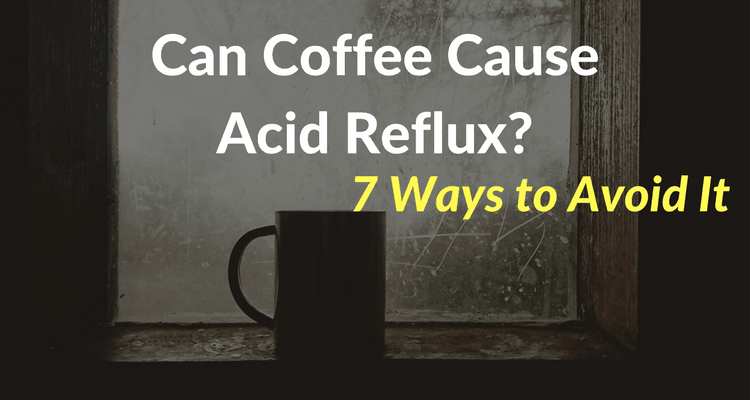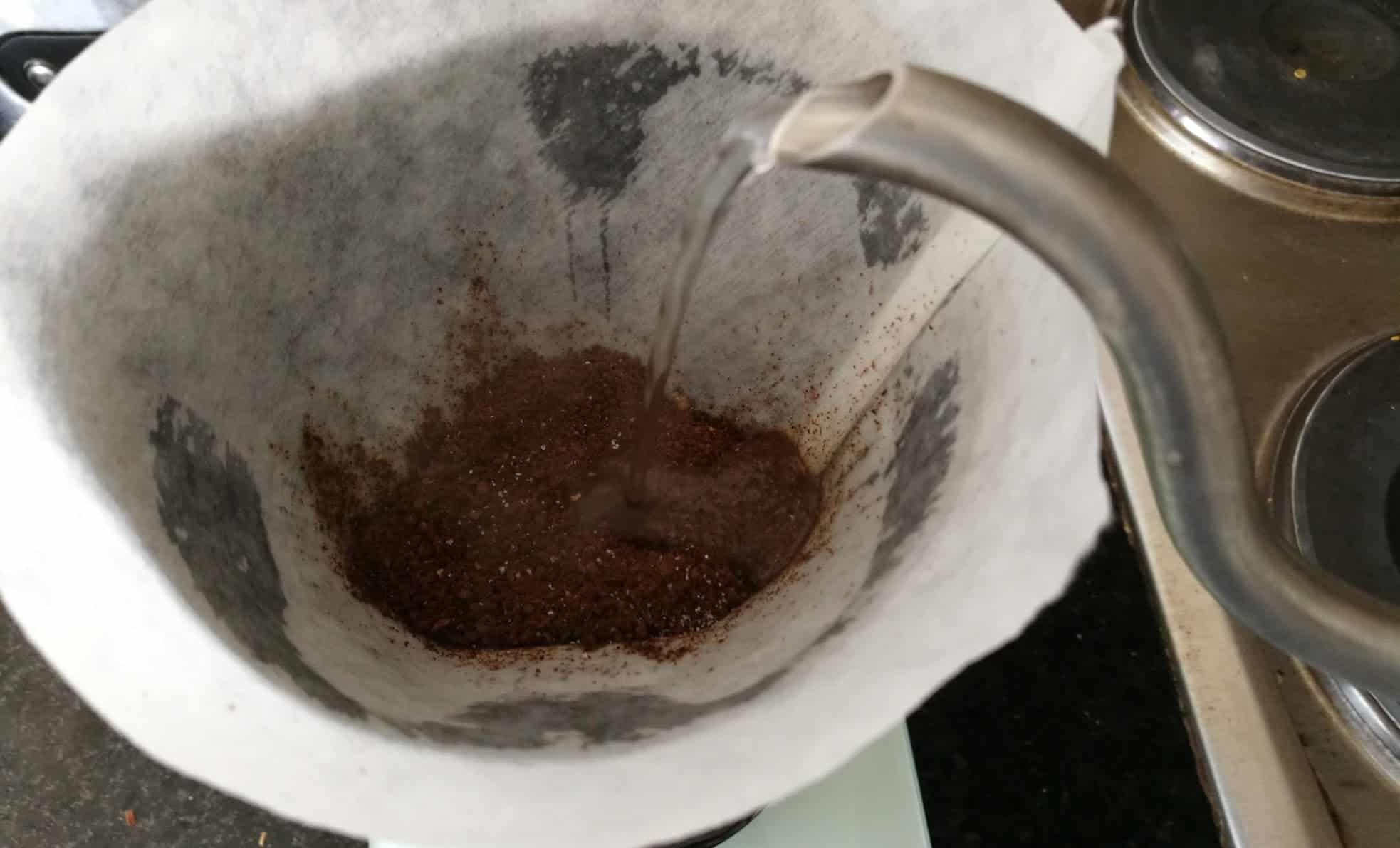Can Coffee Cause Acid Reflux? Yes! 7 Ways to Avoid It

Most of the world’s population contends with acid reflux to some degree.
While some people experience a mild burning sensation in their mid-chest area after eating spicy foods, other people suffer day and/or night with serious internal burning sensations that span from stomach to throat.
Those who deal with the more constant and serious version of acid reflux often have trouble pinpointing the culinary culprit of their discomfort.
If you fall into the latter category and drink coffee, therein may lie the root cause of your acid reflux.
Even occasional heartburn can stem from a cup of java, unless the coffee in the cup is a reduced acid coffee.
Acidic Coffee
Coffee is naturally acidic. The organic acid contained in coffee beans is what provides the tangy, tart jolt that coffee drinkers love.
The natural acid also contains powerful antioxidants that do the body good and made way for the beverage to be on the list of healthy drinks.
However, some people have digestive systems that can’t handle the natural acid and after enjoying a cup of java they are left to contend with the burning, belching and unpleasant acidic liquid that makes its way up from the stomach, through the esophagus and into the back of the throat.
7 Ways to Avoid Acid Reflux
Low Acid Coffee
A few coffee brands are treating coffee beans in a different way so the final product will contain less acid, but still retain full flavor.
By roasting the beans very slowly, or simply interrupting the roasting process, the amount of acidity contained in each bean is significantly reduced.
Another method being used by these low acid coffee brands to reduce the acidity level is the removal of the waxy outer layer of the coffee beans prior to roasting.
The end product has just as much flavor, but is less likely to cause drinkers to reach for an antacid medication after consuming.
The only negative side effect of the methods used to remove some of the natural acids from the coffee beans is the beans become less aromatic as well.
The sensory-pleasing aroma is still there, just not as potent.
Dark Roast
If coffee beans specially treated to remove organic acids is objectionable to you, a dark roast coffee blend will naturally contain less acid.
The darker the roast, the lower the acid level. However, that may pose a quandary for coffee drinkers who prefer a light or medium roast beverage.
Low Elevations
Coffee beans grown at low elevations contain less acid than those grown higher up in mountainous regions.
Knowing where the coffee bean was grown can provide you with a naturally low acid coffee that won’t keep you awake at night with sleep-stealing heartburn.
Acid Reducers
One way to neutralize the acid in coffee is to force a chemical reaction to get rid of it.
The trick is lowering acid while not altering the flavor of your coffee, which is why using a product such as Coffee Tamer works well. It reduces the amount of acid in coffee up to 90%, which in turn greatly reduces your chance of suffering acid reflux.
Products like Coffee Tamer aren’t antacids, which work after coffee has already started to have an effect on your body.
Instead it’s a proactive measure to prevent flareups in the first place and binds together coffee’s acids to keep it from upsetting your stomach.
Those who drink coffee frequently have found acid reducers highly effective and the ideal way to enjoy coffee at any time, even on the go.
Cold Brewing
You may have seen cold brew coffee at your favorite chain, as it’s becoming more and more popular with coffee drinkers.
It produces coffee with a more rounded, less bitter taste, and it’s also favored by many people who have problems with acid reflux or other digestive issues.
Cold brewing is able to effectively neutralize the acid in coffee because it uses cold rather than hot water to extract flavor from beans.
As a result, much less acid is drawn into the finished brew — cold brew coffee has up to 70% less acid than a regular cup of coffee.
One of the best ways to boost the effectiveness of drinking cold brew coffee is to ensure you make it yourself. It’s very easy to do, and if you have a French press it will make straining the grounds out quick and simple.
Otherwise, grab any container or a mason jar with a lid and a piece or cheesecloth or a fine strainer. Put 1/3 cup of regular grind coffee into the container, add 4.5 cups of cold water, stir briefly, and let it sit in your refrigerator for at least 12 hours.
The longer it sits, the more bold the resulting flavor will be. To reduce the amount of silt and grounds in your brew, use 1/2 cup of coarsely ground coffee and the same amount of water.
After the brewing period is over, strain the coffee into a pitcher or your cup and enjoy. If you prefer, strain it again through a coffee filter to catch any fine grounds or silt.
Egg Shells
It may seem odd to use egg shells while brewing coffee to reduce its acid, but it works because of simple chemistry.
Egg shells are alkaline, which works to neutralize any acid, including those in coffee beans. Using egg shells while brewing your coffee will also reduce any bitter taste that it has as a result of the brewing method you choose or the roast of the beans.
Take one or two eggshells that have been rinsed well and have no more egg attached, and crush them with your hands into a bowl.
Place the crushed eggshells into your coffeemaker — if you’re using a French press, percolator, moka pot or some thing similar, put it into the chamber or carafe with the coffee grounds.
For automatic drip machines, place the shells into the basket you put the coffee into. Brew as you normally would, and you’ll find that the taste of your coffee is cleaner and you don’t suffer nearly as much from acid reflux.
A Dash of Salt
Salt is typically added to coffee grounds before brewing or to a finished cup to reduce bitterness or smooth out the flavor of brew that’s too acidic, but some also use this method to neutralize the acid in coffee for the purpose of decreasing the chances of an acid reflux flareup.
It works decently if you have no other methods available and use a small one finger pinch in your cup — if you’re measuring, start with 1/16th of a teaspoon and go up to no more than 1/8th of a teaspoon to avoid a salty flavor.
To increase the effectiveness of adding salt to your coffee, use a dark roasted blend.
Conclusion
The only real way to determine the brand, blend and roast of reduced acid coffee that tastes great without causing acid reflux is through trial and error.
Set up a coffee bar and have a tasting with friends to sample a variety of coffee blends that have reduced acid levels and enjoy the moment with a hot cup of java without the acid reflux.
